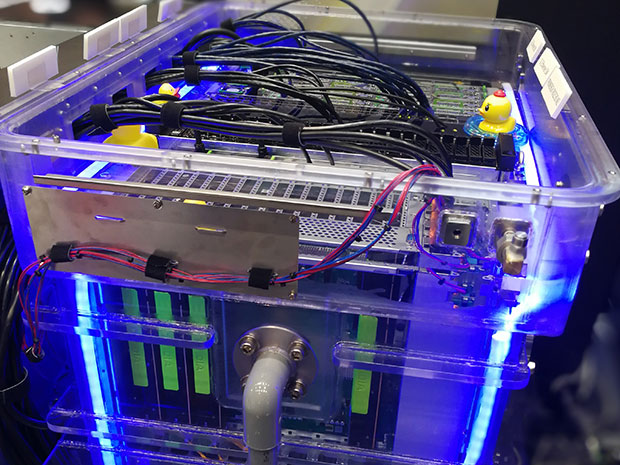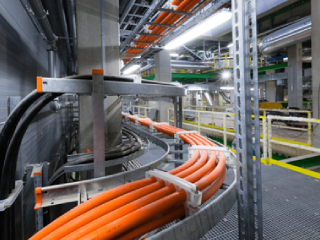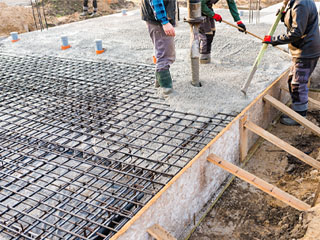Cloud Computing and Artificial Intelligence (AI) bring a new generation of technology with high-performance processors and increased rack density. This corresponds to more heat, transcending the capability of traditional air cooling methods. Direct liquid cooling is now on the rise as an innovative, high-density data center, cooling solution. While air can cool racks up to 20-30 kW, direct liquid cooling can surpass this to beyond 100kW.
Direct liquid cooling is the use of dielectric fluids to dissipate heat from the equipment. It was introduced by IBM in the 1960s. The servers are submerged in a dielectric fluid that carries away the heat and is pumped through a heat exchanger.
Direct liquid cooling is gaining traction today because of the benefits it offers. By capturing the heat directly from the source, hyper-scale data centers can achieve greater reliability. A report by Global Market Insights forecasts that the data center liquid cooling market will escalate to $2.5 billion by 2025 from $750 million in 2018.
Energy Efficiency
Concern over rising energy costs is one of the major reasons for the domination of direct liquid-cooling solutions. The Natural Resources Defense Council (NRDC) has stated US data center power consumption was 70 billion kilowatt-hours in 2014, escalating to 140 billion in 2020. This is equivalent to the annual output of 50 power plants and a cost of around $13 billion in annual electricity bills. Although the cost per kWh rates differ across the globe, electricity prices are adjusted mainly based on Locational Marginal Pricing (LMP). With direct liquid cooling, high-density data centers may achieve a PUE of less than 1.2 without overspending on cooling. It eliminates the air handling systems cutting the cooling power demand. It can also leverage 45°C (113°F) water for cooling. This allows for compressor-less cooling, most of the year in many climates. Another opportunity is to re-use the heat by directing the heated liquid to the building’s heating system. Achieving energy efficiency guarantees an increased return on investment (ROI).
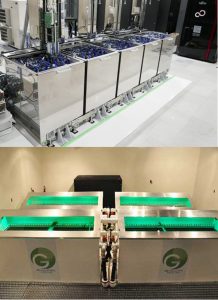
Photo Credit: datacenterknowledge.com
Sustainability
Another key outcome of direct liquid cooling is sustainability. The administrators’ effort and strategy drive toward the concept of a “profitable-green” data center. More than energy savings, they also take positive initiatives to lessen the environmental impact. As a response to climate change, data centers are redesigned amending sustainable practices. Direct liquid cooling (DLC) can absorb RH40%-RH60% of the heat exhausted by the server. This means less work for air cooling systems which significantly reduces the carbon footprint and noise pollution.
Flexibility in Room Design
When adopting a new cooling solution, the implementation based on the existing data center design is considered. Direct liquid cooling brings greater flexibility when it comes to room design. It is feasible with the existing data center racks and infrastructure with minor retrofitting requirements. Cold plates and tubing can be simply added to the current data center design. The system is connected to the same plumbing network of the heat exchangers connected to facility water. This solution also works well in adapting existing air-cooled servers. Components are just the right size to prevent them from disrupting the airflow path across servers.
Silent Operation
Technicians inside the data centers are familiar with the operation noise. Many data centers are almost deafening with the sound of fans. Direct liquid cooling doesn’t require much airflow which reduces the CRAH fan speed. This results in a less disruptive noise. A silent operation and reduced air movement are now essential attributes of a data center. The operators can focus well and stay longer inside the server rooms to work.
Cooling Capacity
People access cloud-based services 24/7/365. There is no definite time when the servers may be called upon. Although one predictive capacity can be made. For example, when a major TV event is being streamed there could be expected increase loads for data centers handling streaming services. To meet this requirement of “on-demand capacity” data centers must operate round the clock without interruption. Liquid cooling has a superior cooling capacity compared to air cooling. Air is naturally an insulator, therefore the water can remove more heat because of its higher thermal conductivity. This diffuses the heat from the hottest component of the servers more efficiently. It also allows the IT equipment to work harder while maintaining the temperature thresholds. The technology is similar to the direct chip liquid cooling used by gamers for overclocking their processors. There are other advantages too. For instance, the air cooler blows air as a response to increasing heat when the equipment is working. On the contrary, direct liquid cooling lowers temperature all the time. It prevents hotspots or over-cooling areas of the data center. Space is better utilized as well with the elimination of the need for aisle containment. Operating at an appropriate temperature increases server lifespan, and lowers the instances of downtime. Downtime can cost approximately $5,600 per minute. According to Gartner, 98% of organizations say a single hour of downtime costs them over $100,000.
Adaptable for New Users
Integrating a new cooling solution requires new procedures to maintain the IT equipment. Direct Liquid Cooling is almost the same as air cooling when it comes to component accessibility. Technicians can slide the server into the chassis without the need for additional connection. Additionally, direct liquid cooling has simpler maintenance compared to air coolers. The cooling loops can be separated from another piece of equipment without affecting it. This means technicians can work on maintaining it without having to shut down the power on the entire rack.
Maximize Floor Space
Direct liquid cooling is contained within the enclosure. Therefore, there is less floor space requirement in deploying the system. This could be a better alternative than space-consuming CRAC units. Maximizing the floor space increases the number of rack locations. More efficient utilization of space, together with energy all helps to reduce the impact the data centers have on our environment.
Categories of Direct Liquid Cooling
Direct liquid cooling can be categorized based on the method of cooling at the chip level. The main methods are single-phase cooling and two-phase cooling.
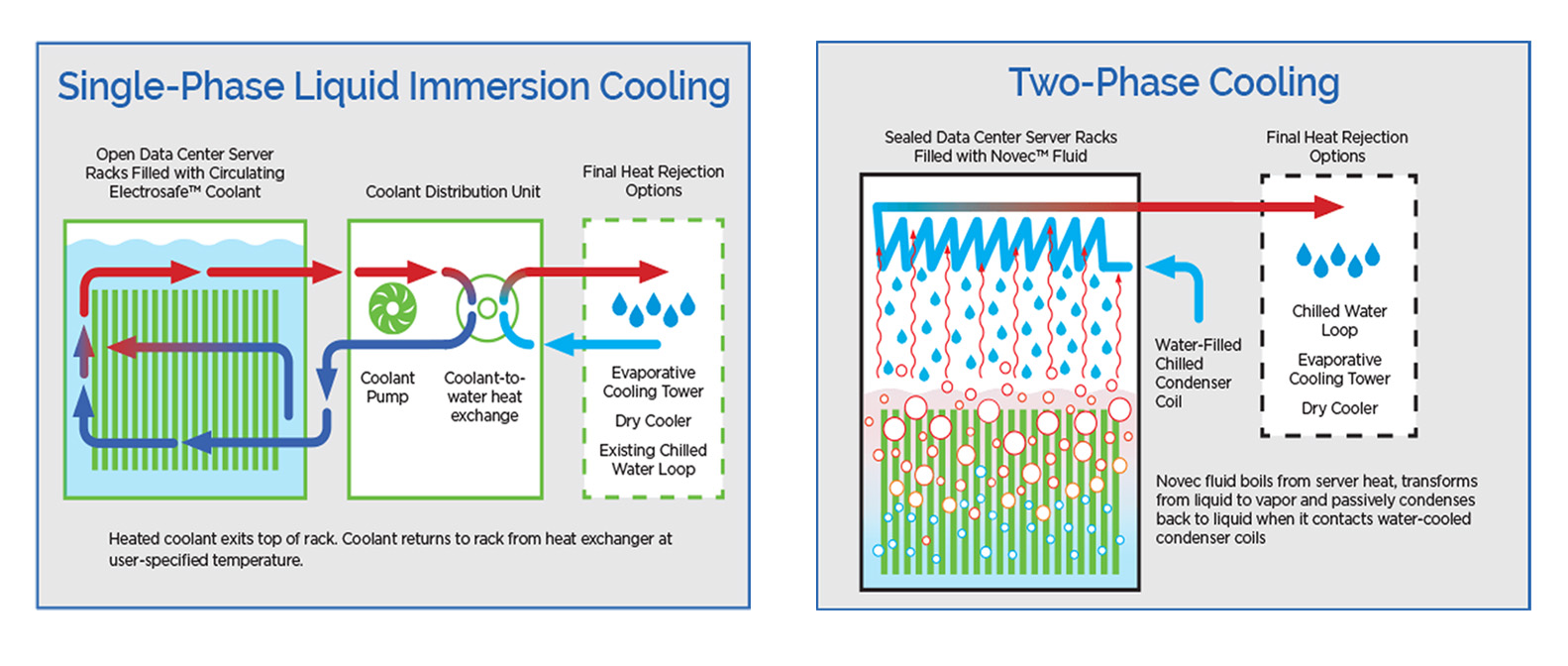
Photo Credit: www.grcooling.com
- Single Phase Cooling
Single-phase means that the fluid doesn’t change state while taking away the heat. In this method, the liquid cools the hotter component. It uses a cold plate on the chip so components are not in direct physical contact with the liquid. With this, air coolers are still needed. The fans provide airflow through the server to remove the heat. The fluid is distributed through a water manifold at the back of the rack. A water manifold is a section of pipe that has built-in ports in it designed for this function.
- Two-Phase Cooling
Two-phase cooling means the fluid changes state as it removes the heat from the server. It uses engineered dielectric fluids as its liquid coolant. When it comes to heat rejection, this method can be a better option. However, this requires additional maintenance to achieve greater effectiveness.
Wireless Monitoring of AKCP
Liquid Cooling Monitoring
In today’s data center, monitoring and alarm are required for any system. AKCP Monitoring Solutions offers monitoring and alarms for temperatures, flow, pressures, and leak detection, as well as the ability to report into data center management software suites.
Temperature Sensors
A wireless temperature sensor or K-type thermocouple is used to record and measure the temperatures of the server surface, liquid bath, and intake and exit coolant inside the coils.
Power Monitoring Sensor
A power meter that can monitor and record real-time power usage must be used to monitor the cooling unit’s power. The AKCP Power Monitor Sensor provides critical data and allows you to remotely monitor power, obviating the need for manual power audits and delivering instant notifications to possible problems. SensorProbe+ and AKCPro Server live PUE calculations may also be utilized with power meter readings to assess the efficiency of power use in your data center. The built-in graphing tool may be used to display data gathered over time using the Power Monitor sensor.
Wireless Pipe Pressure Monitoring
The pressure in the tank was monitored by an automatic pressure relief valve with a pressure sensor. Digital pressure gauge for monitoring all kinds of liquids and gasses. Remote monitoring via the internet, alerts, and alarms when pressures are out of pre-defined parameters. Upgrade existing analog gauges.
Wireless Valve Motor Control
Wireless, remote monitoring, and control of motorized ball valves in your water distribution network. Check status and remotely actuate the valves. Receive alerts when valves open and close, or automate the valve based on other sensor inputs, such as pressure gauges or flow meters.
Conclusion
The data center is a facility of a great investment. As it increases in density, the right cooling solution should be implemented. Direct liquid cooling allows high-density data centers to expand their machine learning services through their heat transfer capabilities. It also addresses other operating issues of air cooling which made it grow momentum in the industry.
However, the successful implementation of this solution also requires additional system controls. Monitoring solutions are integrated within the facility. With the use of reliable sensors, data is gathered which is converted to a record. This makes the operators updated about the condition of the data center in real-time.
Reference Links:
https://info.siteselectiongroup.com/blog/power-in-the-data-center-and-its-costs-across-the-united-states
https://www.asetek.com/media/1089/uit-white-paper.pdf
https://www.datacenterknowledge.com/industry-perspectives/10-considerations-data-center-direct-liquid-cooling
https://buildingenergy.cx-associates.com/2014/01/direct-liquid-cooling-for-data-center-energy-savings/
https://blog.rittal.us/direct-to-chip-liquid-cooling-faqs
https://etheses.whiterose.ac.uk/21185/1/Holistic%20study%20of%20thermal%20management%20in%20direct%20liquid%20cooled%20data%20centres%20from%20chip%20to%20the%20environment.pdf

